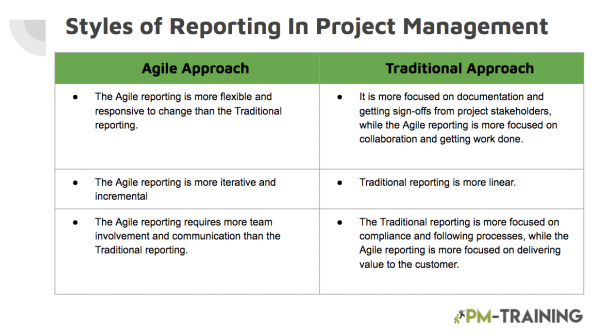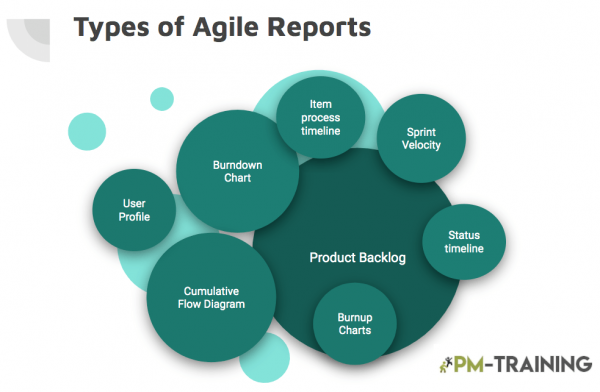Agile reporting is an approach to business intelligence that embraces iterative development and rapid delivery. It is a type of reporting that is done in short cycles. The main aim of agile reporting is to provide continuous feedback to the relevant stakeholders in order to help them make better decisions.
Agile reporting is a flexible and iterative approach that helps organizations to adapt to changing requirements and deliverables. In order to properly understand agile reports, we must first understand the agile methodology.
Agile is a software development methodology that emphasizes iterative development, team collaboration, and customer feedback. It is a popular methodology for software development teams because it helps to avoid some of the pitfalls of traditional waterfall methodology, such as scope creep and unrealistic deadlines.
The agile methodology is based on the principle of delivering working software early and often. This means that agile teams take a cyclical approach to software development, with each cycle (or sprint) resulting in a working software product.
The key to successful agile reporting is to focus on the metrics that matter most to your team and your project by using the right tools that we listed below

Why is Agile Reporting Important?
One of the key benefits of Agile is that it provides transparency and visibility into the software development process. This is achieved through a number of reports that are generated during each sprint, or iteration.
Some of the most popular Agile reports include the product backlog, sprint velocity, item process timeline, burndown chart, burnup chart, user profile, cumulative flow diagram, and status timeline.
The benefits of these reports benefit may include:
- A more accurate understanding of progress against objectives
- Improved communication between the project team and stakeholders
- Greater transparency and accountability
- Reduced bureaucracy
- The ability to adapt reporting to changing needs
How Traditional reports differentiate from Agile reports
Agile and traditional reporting are two very different things.
It seeks to understand what this difference means for reporting and then designs reporting tailored specifically for Agile. Traditional reporting does not take this difference into account. So, what is the difference between the two? Here are some key points:

- Agile focuses on providing information to project stakeholders that is timely, accurate, and relevant.
- Agile reporting is more iterative and incremental, while Traditional reporting is more linear.
- Agile reporting requires more team involvement and communication than Traditional reporting.
- Traditional reporting is more focused on compliance and following processes, while Agile reporting is more focused on delivering value to the customer.
- Traditional reporting is more rigid and scheduled, while agile reporting is more flexible and responsive.
- Traditional reporting often requires more upfront planning, while agile reporting can be more spontaneous.
- Traditional reporting can be more comprehensive and detailed, while agile reporting is typically more concise and focused.
Examples of Popular Reports in Agile
Product Backlog
The product backlog is a prioritized list of user, business, and technical requirements that a development team uses to guide its work.
It is a living document that is constantly updated as new information is gathered and priorities change.
The report provides a prioritized list of work items, along with associated estimates, that need to be completed in order to achieve the product’s goal. The report is maintained by the product owner and is updated throughout the product development process.

Burndown Chart
This is an agile report that shows the progress of a project over time. It is generated by a software tool that tracks the project’s progress and produces a graphical representation of the data.
The report is used by project managers to track the project’s progress and to identify any problems that may be causing delays. It is also used by team members to see how their work is contributing to the project’s overall progress.
This is a graphical representation of work remaining against time.
Sprint Velocity
It is a report of a record of how much work was completed during a sprint.
This report is used by development teams to plan and track their progress.
The report includes information on the number of tasks completed, the estimated time to completion, and the actual time to completion.
A sprint velocity report is a valuable tool for developers because it helps them to identify obstacles and identify areas of improvement.
Cumulative Flow Diagram
One of the most important reports is the cumulative flow diagram. This report helps to visualize the progress of a software development project and identify any potential bottlenecks.
A cumulative flow diagram is a line graph that shows the number of items at each stage of development, from backlog to done. The diagram is cumulative because it shows the total number of items at each stage, not just the items added in that sprint.
Other types of reports used in Agile can be:
- Item Process Timeline
- Status Timeline
- User Profile
- Burnup Charts

Tips and best practices
To write an agile report, you must first understand the basics of agile reporting and the types of reports that are commonly used in agile organizations. Then, you can tailor your report to the specific needs of your team and project for example:
- Be flexible and adaptable. The whole point of agile reporting is to be able to adapt to changes quickly and easily. This means that you need to be flexible in your approach and be willing to change your plans as needed.
- Keep the customer or client in mind. Your reports should always be focused on delivering value to the customer or client. This means keeping it concise as Agile reports should be concise and to the point and in the right format.
What are Reports in Scrum?
In scrum, reports are a way for the team to communicate their progress and plans to the stakeholders. They can be used to give updates on the product backlog, sprint backlog, and burn-down chart. Reports can also be used to communicate risks, issues, and impediments.
What are the most popular reports used in Scrum?
There are three main types of reports in Scrum: Release reports, Sprint reports, and Product backlog reports. Release reports show progress towards a goal over a longer period of time, while sprint reports show progress for a specific sprint. Product backlog reports show the status of the product backlog and can be used to prioritize items for future sprints.
What are the differences between Agile and Traditional reporting?
Agile reporting is more flexible and responsive to change than Traditional reporting. Traditional reporting is more focused on documentation and getting sign-offs from project stakeholders, while Agile reporting is more focused on collaboration and getting work done.
